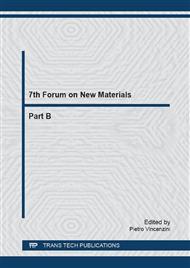p.70
p.75
p.82
p.93
p.103
p.109
p.117
p.125
p.131
Electromagnetic Properties in Multilayer Graphene within the Ritus Formalism: Transverse Electrical Conductivity
Abstract:
Within the framework of the Quantum Field Theory, we discuss how to study electromagnetic properties of a multilayer graphene sample in the presence of electric and magnetic fields, both perpendicular to the graphene planes. We deal with the multilayer system by taking into account the quantum mechanical supersymmetric property of the monolayer Hamiltonian. We solve the Dirac equation for the graphene charge carriers by using the Ritus formalism. This formalism consists in the diagonalization of the operator with and the Dirac gamma matrices which contain information about the pseudo-spin. We calculate the charge carrier propagator for the monolayer case, and we obtain the photon polarization operator, the leading quantum correction to the classical Lagrangian density that encodes the electromagnetic properties of the system through the constitutive equations. With the quantum supersymmetrical properties of both, the monolayer and the multilayer graphene Hamiltonians, it is possible to extend our results to obtain the charge carrier propagator for the multilayer case.
Info:
Periodical:
Pages:
125-130
Citation:
Online since:
October 2016
Price:
Сopyright:
© 2017 Trans Tech Publications Ltd. All Rights Reserved
Share:
Citation:


